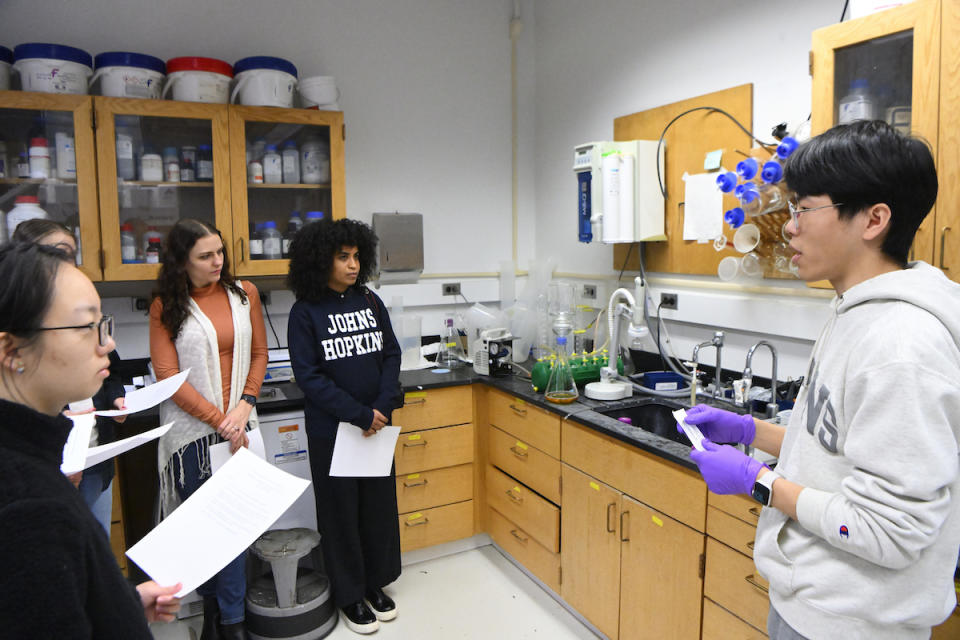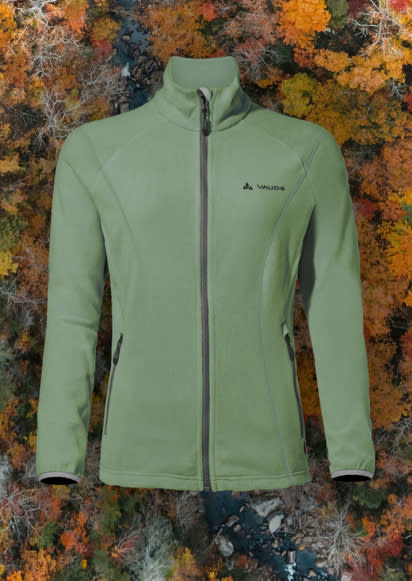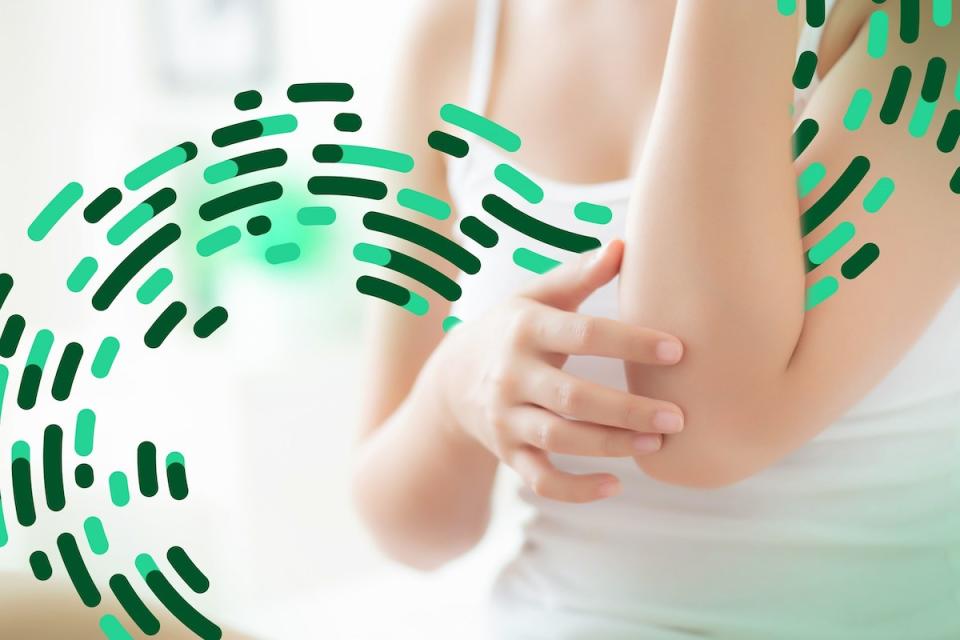Material World: Bio-based Polyester Fleece, TomTex Raises $2.25M, HeiQ Skin Care

Material World is a weekly roundup of innovations and ideas within the materials sector, covering news from emerging biomaterials and alternative leathers to sustainable substitutes and future-proof fibers.
TômTex

Sustainable biomaterial producer TômTex closed a $2.25 million seed round, bringing its total raise to $4.15 million. Spearheaded by founder Uyen Tran, global venture capital firm Happiness Capital led the round. SOSV, Parley for the Oceans, Earth Ventures and MIH Capital, both climate-tech venture firms, also participated.
More from Sourcing Journal
Former Under Armour CEO Heading New PET Textile Recycling Venture
Sequoia-Backed Fast-Fashion E-tailer Urbanic Raises $150 Million
“I am excited about our recent fundraising success, which will fuel TômTex’s team growth, key hires and expanded manufacturing. Beyond scaling, it’s a strategic step to secure new contracts and revenue, strengthening our market position,” Tran said. “I’m gateful to our dedicated team and investors who believe in the power of scalable and sustainable TômTex’s biomaterial technology platform. Together, we’re forging a path toward a more sustainable, innovative future.”
Three-year-old TômTex creates proprietary, 100 percent naturally biodegradable materials, including the Series WS, made from shell seafood waste, and the new Series M, made from mushrooms. Both materials utilize raw chitosan, a biopolymer found in seafood shells and mushrooms. TômTex mixes chitosan with other green ingredients using a 100 percent sustainable chemical process.
While reaching commercial scale is a challenge in the alternative leather market, TômTex hasn’t run into this issue because it uses food waste as a raw material rather than growing new materials in a lab. In fact, the company recently achieved its first continuous, roll-to-roll material production milestone—producing 100 linear feet in this initial run with plans for a follow-up 10 times larger in the coming weeks.
“We are thrilled to be part of TômTex’s journey,” Eric Ng, general partner at Happiness Central, said. “Their biomaterial technology is a game-changer, not just for its viability in the market but also for its sustainability. Investing in TômTex means investing in a scalable platform that has the potential to revolutionize industries while making a positive impact on our planet.”
Taking its name from the Vietnamese words for “shrimp” and “textiles,” TômTex wants to tackle two birds with one stone, addressing both textile and food waste. Tran, who was born and raised in Danang, Vietnam—a prominent textile hub—has witnessed first-hand the reality of textile pollution. What’s more, Vietnam discards nearly one million tons of aquaculture waste each year. For Tran, expanding the potential of chitosan by offering a new regenerative source made from mushrooms is an opportunity to address both issues.
“As you read this, you likely have at least four synthetic leather items, which are, in fact, plastic. These items will persist in our environment for centuries,” Tien Nguyen, general partner at Earth Venture Capital, said. “We are incredibly proud to support TômTex to address this problem. As a major player in the global shrimp industry, Vietnam witnesses the massive waste of shrimp shells, aligning perfectly with TômTe’s philosophy: ‘Waste is the new luxury.’ Now is the time for TômTex to scale. We are committed to this critical stage of the company, driven by a strong belief in the future of sustainable fashion.”
Good Fibes

Four innovators have joined Chain Reaction Innovations (CRI), the Lab-Embedded Entrepreneurship Program (LEEP) at the U.S. Department of Energy’s Argonne National Laboratory via the program’s seventh cohort. One of those innovators is Alexis Peña, a biomedical engineer who wants to make artificial bioengineered protein-based fibers to replace petroleum-derived textiles through her company, Good Fibes.
“Our primary goal is to really think about harnessing natural filamentous proteins, naturally occurring proteins, to then develop high performance textiles that will then enable a circular textile economy,” Peña told Sourcing Journal. “There are a lot of different ways to promote circularity in fashion but for us, we really think it should start with the raw materials.”
The early-stage biotech startup aspires to replace petroleum-derived fibers using man-made, bioengineered, protein-based fibers. Good Fibes, co-founded by then-PhD students at Johns Hopkins University and School, respectively, Peña and Lauren Blake, aims to grow textile fibers in a lab using cellular agriculture with the objective of engineering proteins as biological building blocks to make renewable, biodegradable, non-toxic fibers that outperform what’s on the market and replace petroleum-based versions.
“There are some properties that we realized are so needed in the textile industry, like elasticity—everyone needs elasticity in their clothes and that’s actually where we’re trying to get our major edge because natural fibers cannot be elastic on their own, they have to be combined with spandex or other forms of elastane,” Blake said. “It’s also about building a more resilient textile economy to address some of these limitations using something lab-grown and that is more consistent and resilient over time.”
Through the cohort, each innovator will collaborate with a host scientist at Argonne to develop clean-energy startups that reduce greenhouse gas emissions and increase the United States’ competitiveness in emerging energy technologies. The innovators were selected following a national solicitation process and a two-part pitch competition with judging from local, regional and national scientists, engineers and industry experts.
“CRI is a unique program that provides unparalleled access to a national lab and the regional innovation ecosystem,” Dick Co, CRI’s director, said. “The CRI team and I are excited to support this group of talented innovators at the start of their entrepreneurial journeys.”
Previous CRI cohorts include Joanne Rodriguez’s Mycocycle, which licenses a process to minimize waste, create new materials and reduce greenhouse gases using mushrooms.
UPM Biochemicals x Vaude

This week at Ispo Munich 2023 Vaude and UPM Biochemicals are launching what they’re calling the world’s first fleece jacket made with wood-based polyester. The European supplier and the biochemical company collaborated to create outerwear made with bio-based chemicals to “prove the shift toward renewable materials in textiles is possible today.”
“We recognize the acute challenge faced by the fashion and footwear industries to find more sustainable solutions for the textiles and materials used in their products,” Michael Duetsch, vice president of biochemicals at UPM, said. “Today’s launch of the first-ever biobased fleece jacket is a milestone in responding to that challenge, enabling fashion industry leaders to take action now and move beyond fossil-based materials.”
The resin traditionally used to make polyester contains 30 percent monoethylene glycol (MEG), typically derived from petroleum.
UPM and Vaude replaced the petroleum-based monoethylene glycol (MEG) that goes into resin-based polyester with a bio-monoethylene glycol (BioMEG). Manufacturers can seamlessly swap bio-derived UPM BioPura into their standard polyester production process because it’s molecularly identical to the fossil-fuel version.
“Vaude is a leader in advancing sustainable products—addressing all aspects of sustainability from longevity through repairability and alternative use options to truly responsible materials,” Duetsch said. “This collaboration confirms the strong appeal of our novel product portfolio to changemakers in the outdoor and sports industry but also beyond. By building a first-of-its-kind biorefining business to offer a new generation of biobased renewable materials, we can help global brands to reduce their CO2 footprint and de-fossilize their products.”
UPM is pouring nearly $1.3 million into build the world’s first industrial-scale biorefinery in Leuna, Germany, which will create next-generation biochemicals from responsibly sourced hardwood.
“We have partnered with UPM as partnerships across the whole value chain are a prerequisite for enhancing sustainable innovations. This initial milestone marks the first step in our journey to create a polyester derived from non-fossil ingredients,” René Bethmann, senior innovation manager at Vaude, said. “Producing outerwear made with biobased chemicals is art of our shift toward using renewable materials in the textile and apparel value chain—we want 90 percent of all our products to be biobased or have recycled content of more than 50 percent.”
HeiQ

Textile and materials innovation company HeiQ unveiled HeiQ Skin Care technology for “next-to-skin” apparel and home textiles, a 100-percent biobased textile finish. This technology employs synbiotics, a mixture of prebiotics and probiotics that HeiQ claims renews and rebalances skin while minimizing signs of aging.
“HeiQ Skin Care represents a leap forward in textile innovation, combining the power of probiotics and prebiotics to enhance skin microbiome and overall skin appearance,” Mike Abbott, head of the HeiQ textiles and flooring business unit, said. “It is another way of delivering our promise of improving the lives of billions, which is at the core of everything we do at HeiQ. Our technology is a testament to HeiQ’s commitment to pushing the boundaries of what textiles can achieve, and we are excited to showcase it at Ispo Munich 2023.”
HeiQ Skin Care is suitable for both natural and synthetic textile fibers. It can be applied to any textile item that comes into direct contact with the skin, such as sportswear and athleisure as well as bedding items.

